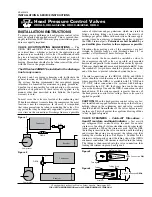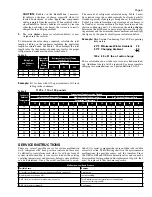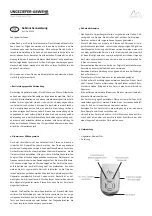
Head Pressure Control Valves
OROA-5, ORI-6-65/225H, ORI-10-65/225-H, ORD-4
INSTALLATION INSTRUCTIONS
To ensure proper performance, head pressure control valves
must be selected and applied correctly. This is covered thor-
oughly in Bulletin 90-30. However, proper installation proce-
dures are equally important.
VALVE LOCATION/PIPING SUGGESTIONS —
The
OROA, ORI and ORD valves can be installed in horizontal
or vertical lines – whichever best suits the application, and
permits easy accessibility of all valves. Consideration should
be given to locating these valves so they do not act as an oil
trap and so solder cannot run into the internal parts during
brazing. Precautions should also be taken to install the valves
with the flow in the proper direction.
The ORI valve CANNOT be installed in the discharge
line for any reason.
Figures 1 and 2 are piping schematics only to illustrate the
general location of the OROA, ORI, and ORD valves in
the system. Sporlan recommends that recognized piping
references be consulted for assistance in piping procedures.
Sporlan is not responsible for system design, or for misap-
plication of its products. If these valves are applied in any
manner other than described in this bulletin, the Sporlan
warranty is void.
In most cases, the valves are located at the condensing unit.
When the condenser is remote from the compressor, the usual
location is near the compressor. In all cases, it is important
that some precautions be taken in mounting the valves. It is
suggested that they be adequately supported to prevent exces-
sive stress on the connections. Discharge lines are a possible
source of vibrations and gas pulsations, which may result in
fatigue in tubing, fittings, and connections. The severity of
discharge gas pulses differs with each system. On some appli-
cations it may be necessary to dampen the pulses to protect
the ORD-4 internal parts.
Pulsations are best handled by a
good muffler placed as close to the compressor as possible.
Vibrations from moving parts of the compressor are best
isolated by flexible loops or coils (discharge lines 1/2” or
smaller), or flexible metal hoses for larger lines.
For best results, the hoses should be installed as close to
the compressor shut-off valves as possible, and mounted
horizontal and parallel to the crankshaft
or
vertically upward.
The hoses should
never
be mounted horizontal
and
90° from
the crankshaft. A rigid brace should be placed on the outlet
end of the hose to prevent vibrations beyond the hose.
The inlet connections on the OROA-5, ORI-6 and ORI-10
valves should be sized the same as the outlet of the condenser
where possible. The ORD-4 is available with 5/8” ODF and
7/8” ODF solder connections. On systems with discharge
lines smaller than 5/8” OD, the bypass line can be the same
size as the discharge line and the ORD-4 connections can be
bushed down. If the system capacity is greater than any of
the head pressure control valves ratings, these valves can be
applied in parallel.
CAUTION:
When the head pressure control valves are fac-
tory installed and capped for future hook-up in the field, any
holding charge in the condensing unit and valve assembly
should be bled off from
all
sides of the valves before remov-
ing the caps. This will prevent the caps from blowing off due
to any trapped refrigerant.
VALVE STRAINERS –
Catch-All
®
filter-driers –
See·All
®
moisture and liquid indicator —
Just as with
any refrigerant flow control device, the need for an inlet
strainer is a function of system cleanliness and proper instal-
lation procedures. When the strainer is used with the ORI,
the tubing is inserted in the valve connection until the tubing
and strainer flange ring are up against the tubing stop, thus
locking the strainer in place. See Figure 3. In order for the
strainer to seat properly against the tubing stop of the OROA
condenser connection, the strainer is inserted into the tubing.
The tubing is then inserted into the valve connection, thus
locking the strainer in place. See Figure 4.
© Copyright 2016 by Sporlan Division, Parker Hannifin, Washington, MO
FOR USE ON REFRIGERATION and/or AIR CONDITIONING SYSTEMS ONLY
Tubing Stop
Strainer
Valve Connection ORI
Tubing Stop
Tubing
Tubing
Strainer
Valve Connection OROA
Condenser
Compressor
Receiver
ORD-4
ORI
Condenser
Compressor
Receiver
OROA
Figure 1
Figure 2
Figure 3
Figure 4
INSTALLATION & SERVICE INSTRUCTIONS
SD-68-52016






















